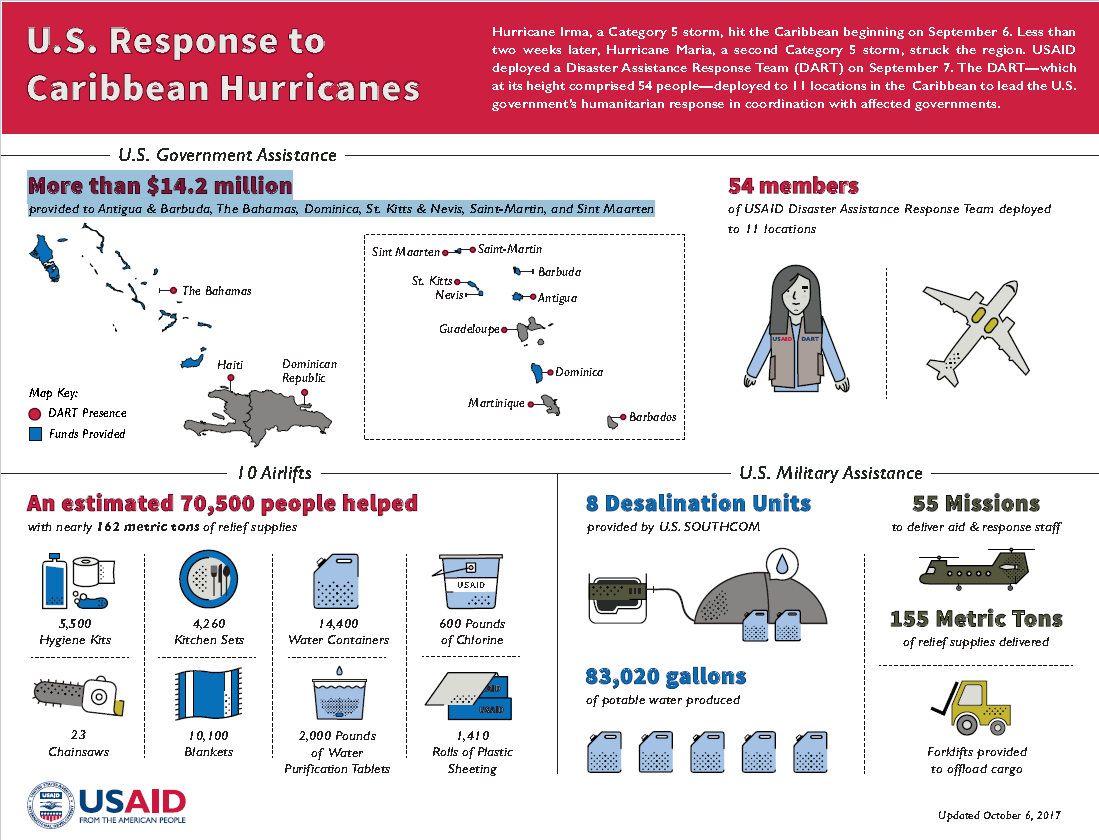Members of USAID’s Caribbean Hurricanes Disaster Assistance Response Team (DART) on Dominica are coordinating with stakeholders to meet the urgent needs of hurricane-affected populations. To ensure the rapid delivery of assistance throughout the island, particularly isolated areas, the DART is working closely with Government of the Commonwealth of Dominica (GoCD) officials and Joint Task Force-Leeward Islands (JTF-LI), consisting of members from DoD’s Southern Command.
On September 26 and 27, four flights carrying a combined 45 metric tons (MT) of USAID/OFDA relief commodities—including plastic sheeting, hygiene kits, water containers, and blankets sufficient for approximately 30,000 beneficiaries—arrived in Dominica, Saint Kitts and Nevis, and Sint Maarten. With these flights, USAID/OFDA has airlifted a total of more than 151 MT of relief supplies for the humanitarian response in the Caribbean. Previous flights had transported USAID/OFDA relief items to Antigua and Barbuda and The Bahamas.
The U.S. Agency for International Development (USAID) is airlifting more than 45 metric tons of critical relief supplies-including emergency shelter materials, hygiene kits, water containers, and blankets-to Dominica, St. Maarten, and St. Kitts & Nevis to assist people affected by Hurricanes Irma and Maria.
Members of USAID’s Caribbean Hurricanes Disaster Assistance Response Team (DART) on Dominica are coordinating with humanitarian stakeholders on the island to meet the needs of hurricane-affected populations. Constrained road access is a significant challenge to relief operations, and the DART is working closely with Government of the Commonwealth of Dominica (GoCD) officials, other donors, and relief organizations to facilitate the rapid delivery of assistance throughout Dominica.
On September 21, members of USAID’s Caribbean Hurricanes Disaster Assistance Response Team (DART) arrived on the island of Dominica to conduct damage and humanitarian needs assessments. The DART confirms that Hurricane Maria caused widespread devastation on Dominica, including a critical loss of roofs, many obstructed roads, and damaged electrical, water, and telecommunications networks.








Comment
Make a general inquiry or suggest an improvement.